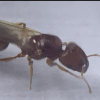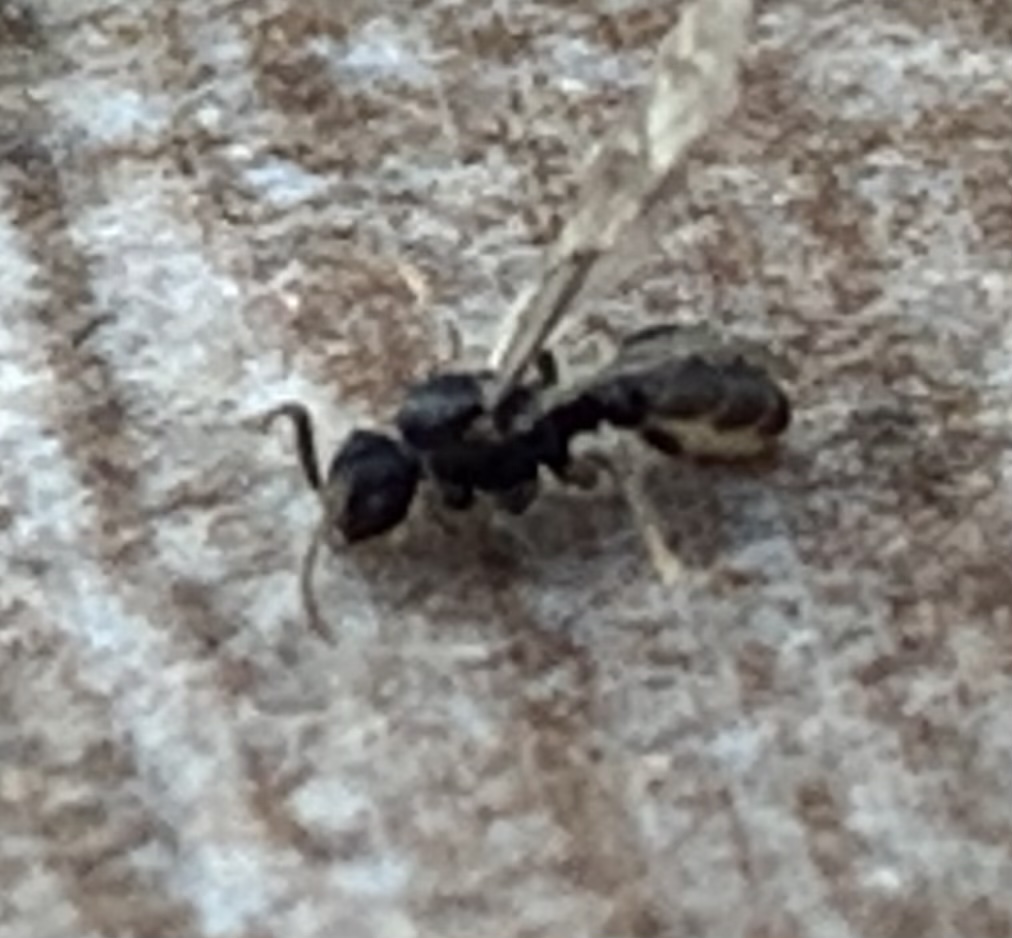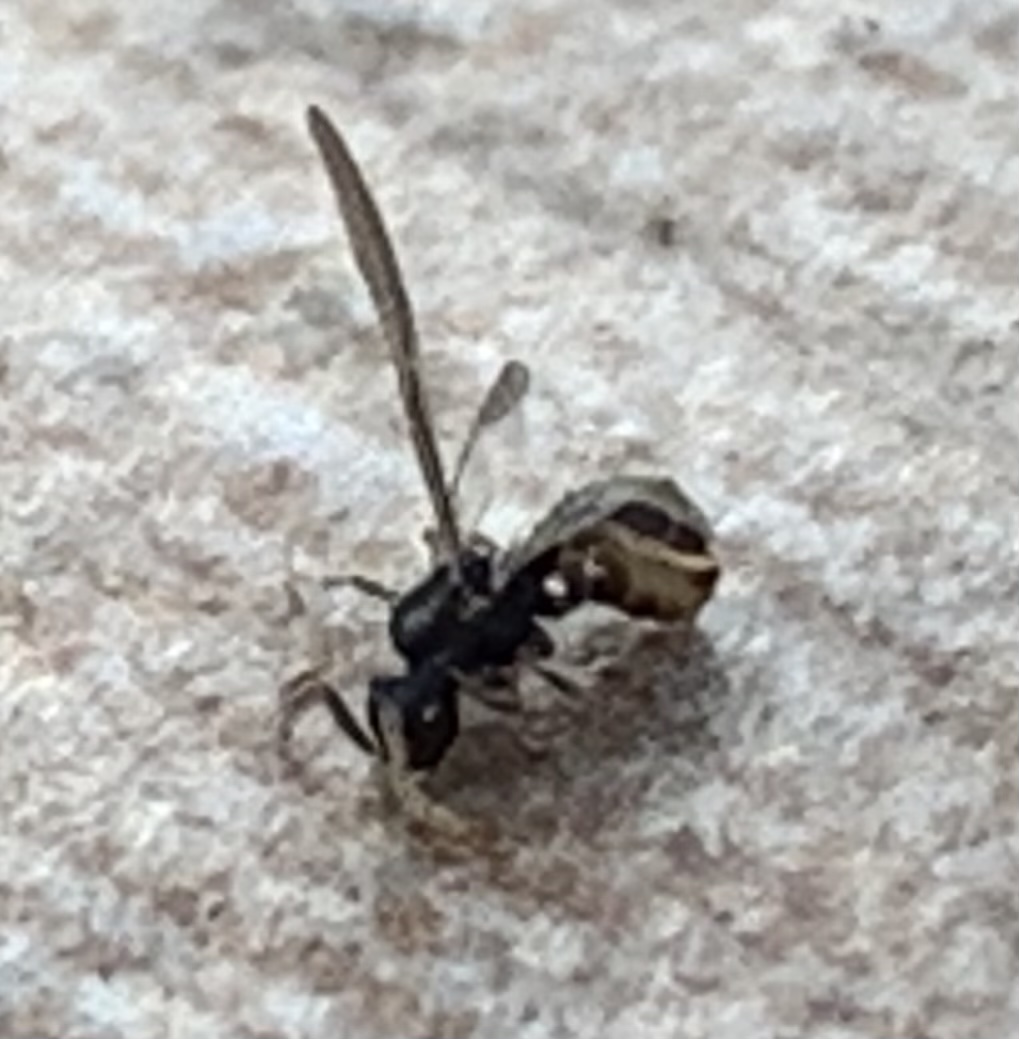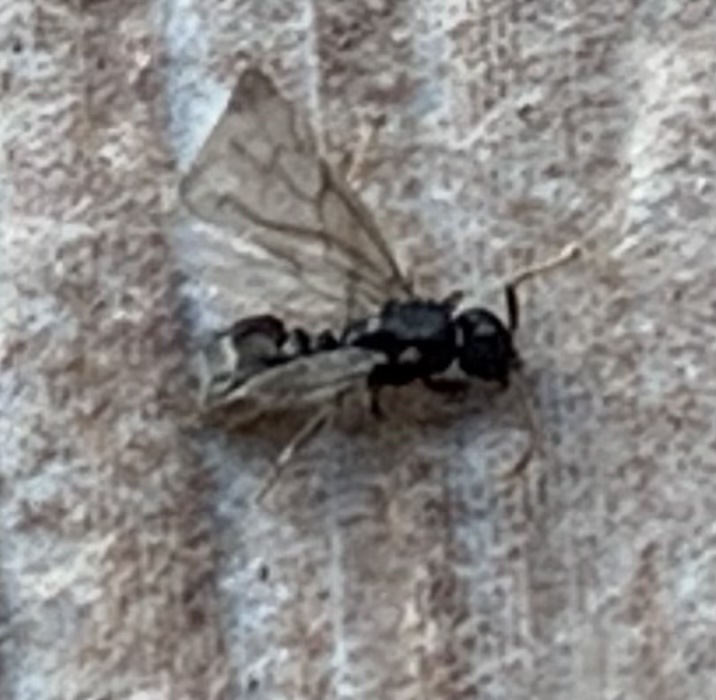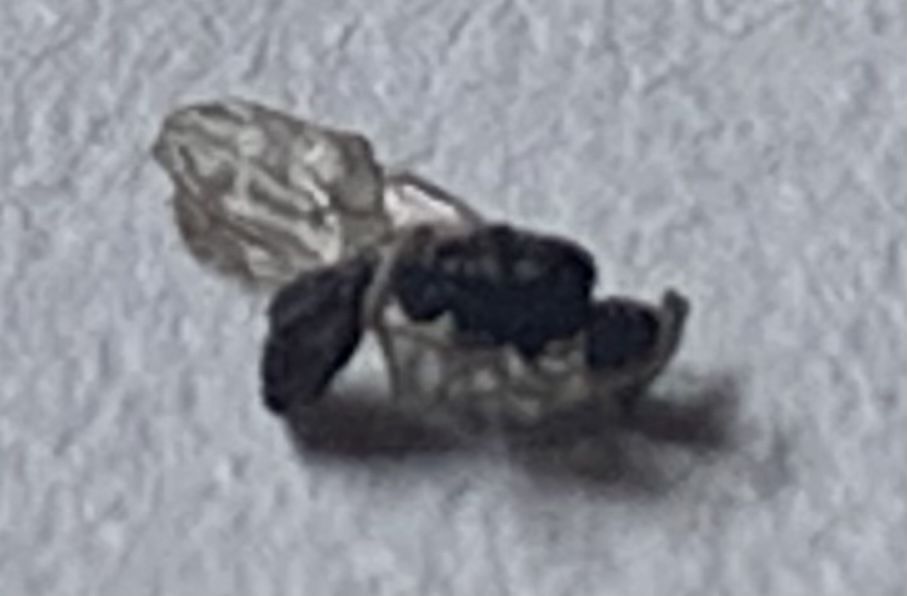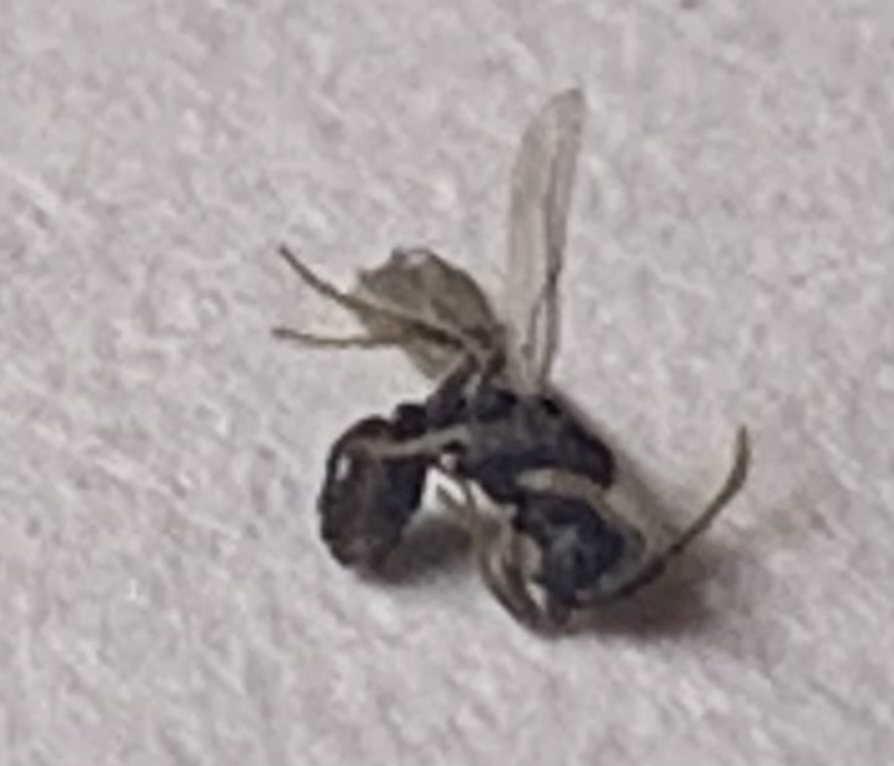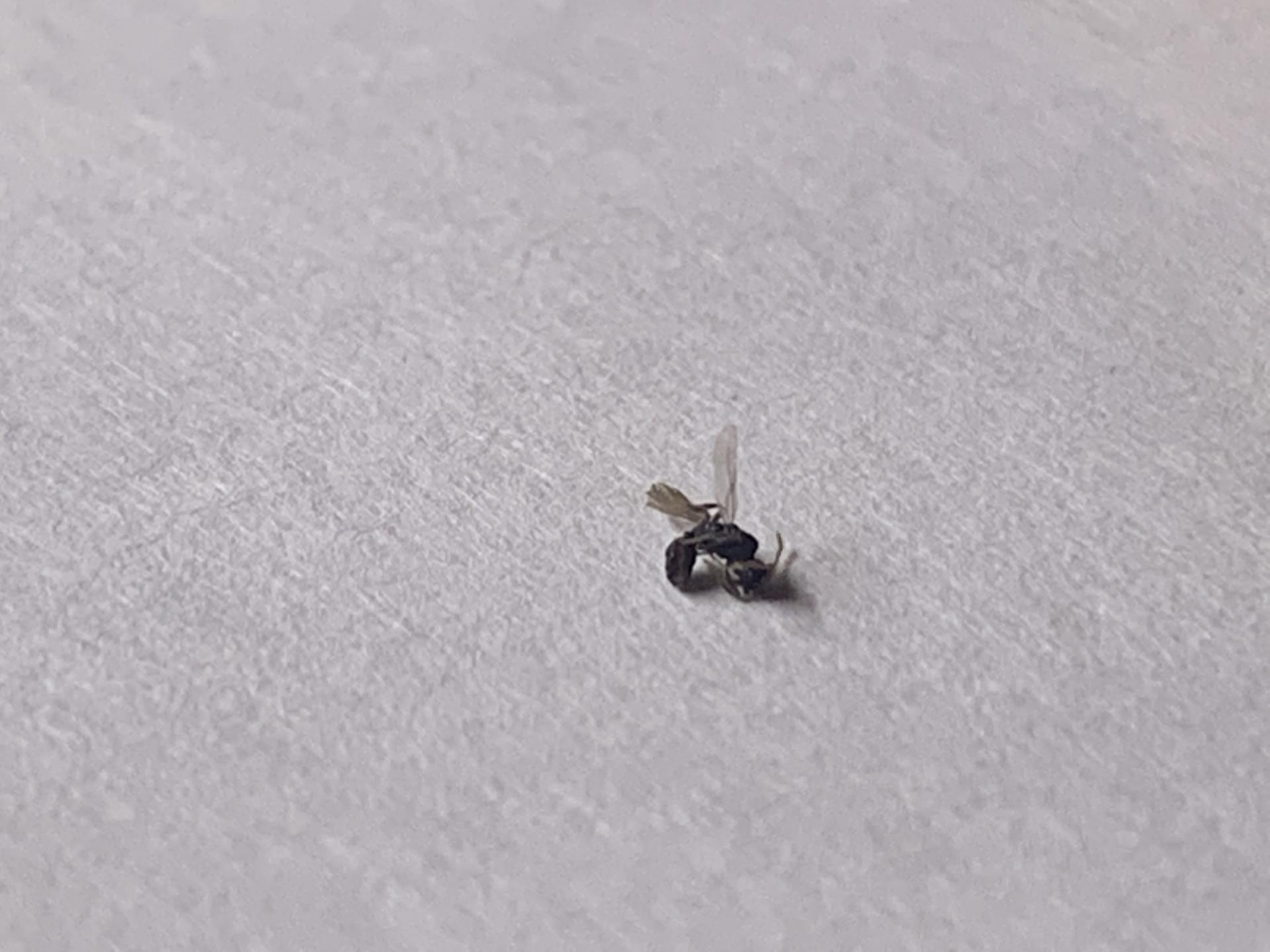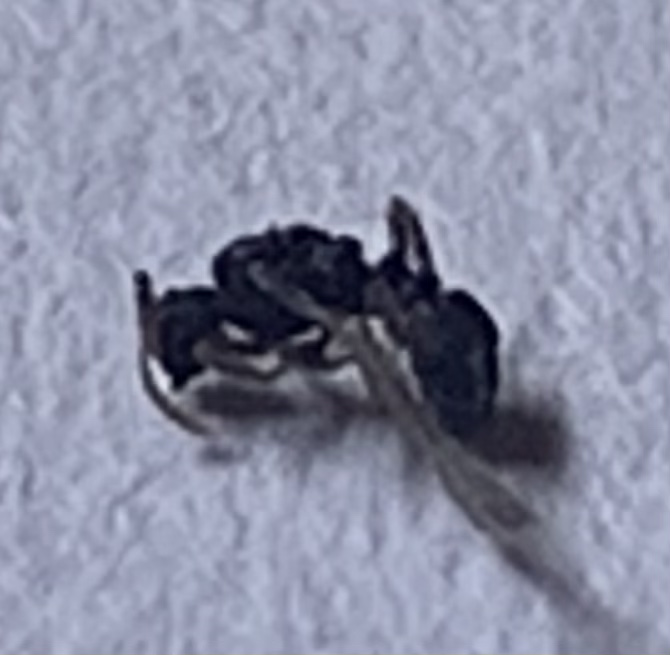6 -11-2021
Found this deceased queen in the pool, I even kept her for a while hoping she’d wake up but never did. She was surprisingly tiny, I was unable to get accurate measurements but something around 2.5 - 4 mm. She has brownish orange legs and antennae and a glossy black mesosoma with a matte black head. A segmented gastor with white underneath the segments.
Sorry for the grainy photos, my macro camera arrives tomorrow.
Thanks for the help!
Edit: wrong month lol
Edited by yibsi, June 11 2021 - 6:08 PM.


